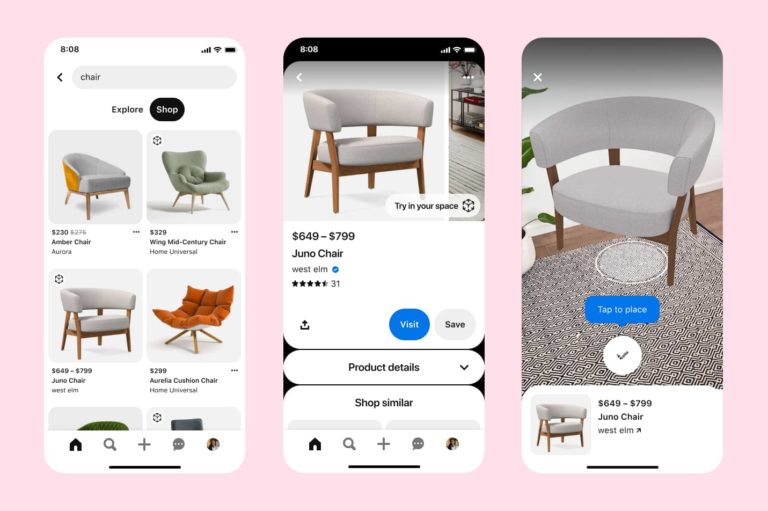
It’s no secret that social media platforms make the vast majority of their revenue through selling targeted advertising. In 2021, Meta (formerly Facebook) generated $117.93 billion in revenue, the majority of which — $114.93 billion — came from ads. However, although this model might have worked for the tech giants in the past, things are rapidly changing.
As the demand for privacy among consumers grows, an increasing number of corporations are keen to portray themselves as defenders of personal information. In 2021, Apple introduced a new feature called App Tracking Transparency (ATT), giving users the option to stop apps from snooping on them as they move from one app to the next. A month after the feature was introduced, a whopping 96% of US users chose to opt-out of tracking.
Not only did the launch of ATT help Apple turn privacy into a competitive advantage (the company’s mobile app advertising more than tripled in the six months after the feature launched), but it also devastated its competitors. The fact that social media companies can no longer track consumers between apps means that they can’t target users with ads as well as before, since they’re not able to identify cross-content navigation and build more precise profiles of the consumer. As their advertising becomes less valuable, the inevitable is happening: Advertisers are pulling out. According to Mark Zuckerberg, the CEO of Meta, Apple’s privacy changes will result in $10 billion in lost sales in 2022.
As a result of all this, social media platforms are desperately looking for new ways to make money. The good news is that, even if advertisers are fleeing social media, users are not going anywhere. In 2021, online users spent an average of 90 minutes on social media. Fast-forward to 2022, and the daily amount of time we spend on social platforms per day has grown to 147 minutes.
Social media is a great way to share our lives with others and keep in touch with friends, but it can also be used by customers to learn more about brands and the products and services they sell. Many users already connect with brands on social media, and 9 in 10 say they buy from companies they follow on social platforms. This makes them ideal platforms for brands to engage with existing and potential new customers.
Social Commerce
Enter social commerce. Social commerce is a model that allows brands to sell products directly within social media platforms such as Facebook, Instagram, Snapchat, and TikTok, without ever leaving the apps. There are myriad ways in which social platforms can do this, from Shops on Instagram — which allow users to browse and shop products on brands’ Instagram pages — to Snapchat Shoppables — which enable users to virtually “try on” products before clicking a “Shop now” button to purchase them. Regardless of the approach, one thing is clear: Social commerce might be a social platform’s best bet in increasing its revenues from here on.
Social commerce is a rising trend. Accenture estimates that social commerce will grow three times as fast as conventional commerce, rising from a predicted $492 billion last year to $1.2 trillion by 2025. Charlotte Tilbury, Ray-Ban, and Zimba are just some brands that already use social commerce to reduce friction and increase conversions. However, smaller D2C brands can equally benefit from it.
Augmented Reality
It isn’t just that social commerce makes it easier for customers to buy products, either. It can also make the whole experience more enjoyable for the customer and more profitable for the brand by encouraging discoverability and increasing engagement. This is particularly the case for social commerce experiences enhanced with augmented reality (AR), which allows users to virtually “try on” products before purchase. AR is a feature that shoppers have come to expect from companies. Already in 2019, three-quarters of customers said they use AR while shopping. And more than two-thirds said they would shop more often if a brand offered an AR experience.
Some social commerce AR experiences, like the Halloween Instagram and Snapchat filters launched by NYX Professional Makeup, can introduce users to new product lines in a fun and memorable way. In this case, the AR filters let users explore a haunted dollhouse and try on the various different haunted makeup looks sported by the five dolls inhabiting the house. Paired with a feature like Instagram Checkout or a “Shop now” button, this kind of filter can prompt users to make spontaneous purchasing decisions.
Other AR experiences allow shoppers to simply “try on” items virtually while browsing social media shops or feeds, helping to appease concerns about sizing and fit. Gucci’s partnership with Snapchat in 2020 allowed users to overlay a digital version of Gucci shoes onto their feet and then purchase them immediately with a “Shop now” button. Research shows that this kind of use of AR can increase conversions by 33% and decrease returns by 22%.
TikTok, the new(ish) social kid on the block (now a leader in organic reach) has also begun a partnership with Shopify, which enables Shopify merchants to automatically create TikTok ads in order to promote their products. Merchants can connect their online product catalogue and push these ads to TikTok, which can then lead to direct purchases within the social platform. Merchants can gain additional reach by promoting these ads on TikTok with media spend, just like on any other social platform, which increases discoverability by allowing consumers to find these ads in their feeds. For platforms, this model results not only in a percentage of product sales, but also in revenues from merchants’ media spend.
The natural next step to this model will be connecting merchants with influencers to promote their ads and products, so that they can benefit from organic reach through their followers. Through the power of AR, influencers could even “wear” these products virtually (for example makeup, a handbag, or even clothing), with the added benefit of saving brands the costs of shipping products to them. To boot, this would also promote the AR virtual try-on filters to consumers, who could then try them themselves, take photos and videos and share with their friends, increasing the brands’ organic reach exponentially.
Livestream Commerce Shopping
Livestream commerce shopping, which I previously wrote about is another growing trend on social media. These are shoppable live streams where influencers demonstrate products while interacting with audiences, who can purchase these products as they watch. AR will soon make livestream shopping much more engaging, interactive, and personal by enabling audiences to virtually “try on” these products themselves as they watch the live streams, thereby increasing purchasing confidence and conversions.
For Meta, Apple’s ATT might have been “harmful.” But at least in 2021, Meta was seen as the leader in social commerce. Of course, just because social commerce is touted as the “next big thing” doesn’t mean that it will succeed in replacing the revenue that social platforms have lost as a result of Apple’s privacy changes. That remains to be seen.
However, if the massive investments that social media giants are making into social commerce solutions are anything to go by (earlier this year, Snapchat released Catalog-Powered Shopping Lenses), then we can expect this new way of shopping to stick around and lead to great increases in sales for brands down the line. Add to this the recent economic troubles caused by inflation and eCommerce logistics, and it is becoming evident that embedding new technologies such as AR could be the key to mass consumer adoption of social commerce. Ecommerce and AR could, indeed, become social media platforms’ saving grace.
 David Ripert is CEO and co-founder of 3D and AR marketing platform Poplar Studio.
David Ripert is CEO and co-founder of 3D and AR marketing platform Poplar Studio.

